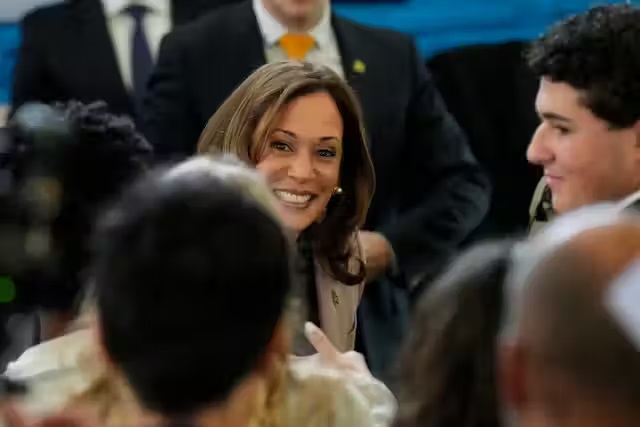Jacquelyn Martin/AP/AAP
by Adrian Beaumont, The University of Melbourne
The United States presidential election will be held on November 5. In analyst Nate Silver’s aggregate of national polls, Democrat Kamala Harris leads Republican Donald Trump by 48.9–46.0. In my previous US politics article on September 9, Harris led Trump by 48.7–46.2.
Joe Biden’s final position before his withdrawal as Democratic candidate on July 21 was a national poll deficit against Trump of 45.2–41.2. By the election, Biden will be almost 82, Trump is now 78 and Harris will be 60.
Harris has been boosted by her performance in the September 10 debate between Harris and Trump, and she needed this boost after her national lead dropped below two points in Silver’s aggregate before there were many post-debate polls. In a YouGov poll for Yahoo news that was taken in the three days after the debate, respondents thought Harris won the debate by 56–26 over Trump.
Harris may have been further boosted by Trump continuing after the debate with the baseless claims about Haitian immigrants eating pets. We don’t yet have any polls conducted since Sunday’s second assassination attempt against Trump, and this may interrupt Harris’ debate bounce.
Before the debate, Harris was dropping slowly from a four-point lead in national polls on August 25 to two points at the debate. It’s unlikely there will be another presidential debate, and Harris’ debate bounce could fade.
Harris’ Electoral College problem
The US president isn’t elected by the national popular vote, but by the Electoral College, in which each state receives electoral votes equal to its federal House seats (population based) and senators (always two). Almost all states award their electoral votes as winner takes all, and it takes 270 electoral votes to win (out of 538 total).
Relative to the national popular vote, the Electoral College is biased to Trump. According to Silver’s model, Harris needs at least a two-point popular vote win to be the Electoral College favorite. She needs at least a four-point popular vote win to be a 94% favorite in the Electoral College.
Harris’ Electoral College win probability in Silver’s model has improved from a low of 35% on September 9 to 43.5% today, but Trump is still the favorite with a 56% win probability. The projection of the popular vote is a Harris win by 50.3–48.5, and this 1.8-point margin is lower than Harris’ 2.9-point margin in current polls, implying some debate bounce adjustment.
Harris has a 67% chance to win the national popular vote, but there’s a 24% chance in Silver’s model that she wins the popular vote, but loses the Electoral College.
There have not yet been many state polls conducted since the debate, and we will need to wait for them to know more. Pennsylvania, with 19 electoral votes, remains the most important state for either Harris or Trump to win. If either wins Pennsylvania, their chance to win is over 90%. The polling average in Pennsylvania gives Harris a 0.5-point lead.
The FiveThirtyEight forecast model is far more favorable to Harris than Silver’s model, with Harris now at a 61% Electoral College win probability in this model. This appears to be because its popular vote projection is at Harris by 4.2 points, implying that she will slightly expand her current lead, not have it reduced.
US economic data
In August US headline inflation rose 0.2%, the same increase as in July. In the last 12 months, it has risen 2.5%, the smallest 12-month increase since 2021. Core inflation rose 0.3% in August, the highest monthly core increase since April; it has risen 3.2% in the last 12 months.
In August, real (inflation-adjusted) hourly earnings were up 0.2% and real weekly earnings up 0.5% owing to an increase in hours worked. In the last 12 months, real hourly earnings were up 1.3% and real weekly earnings up 0.9%.
In August, the unemployment rate was down 0.1% from July to 4.2%. The July unemployment rate of 4.3% was the highest since October 2021, when the US was recovering from the COVID recession. In July, the personal savings rate was down 0.2% from June to 2.9%, its lowest since June 2022.
Silver’s economic index that calculates the average of six indicators is at +0.09, suggesting an economy just above average. Silver wrote last Friday that the Electoral College and the economy are two key reasons to favor Trump in the election.
Adrian Beaumont, Election Analyst (Psephologist) at The Conversation; and Honorary Associate, School of Mathematics and Statistics, The University of Melbourne
This article is republished from The Conversation under a Creative Commons license. Read the original article.

